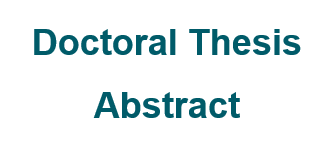Maize and soybean deficit irrigation
strategies for dimension irrigation equipment to improve water productivity in temperate climate conditions
DOI:
https://doi.org/10.31285/AGRO.26.1508Keywords:
deficit irrigation, aquacrop, irrigation sustainabilityAbstract
In regions with temperate and humid climate such as Uruguay, supplementary irrigation stabilizes and increases crop yields. Irrigation on demand generates higher water consumption, which affects production system sustainability due to inefficient use of resources. In order to determine environmentally and economically more sustainable irrigation strategies, three maximum irrigation depths were evaluated in field experiment, (T2) 3 mm d-1, (T3) 6 mm d-1, (T4) 9 mm d-1 and (T1) control without irrigation, on corn and soybean production. Performance differences were observed in both crops at different water deficit levels. When precipitation (PP) was higher than average, its poor temporary distribution generated water deficit at specific times, affecting yield. T1 and T2 did not cover the crop evapotranspiration (ETc) during the critical period and grain filling, which lowered yields. T3 and T4 gave higher yields and in the three years average they were significantly different. T3 did not always cover the ETc, but the soil reserve and PP contributed to cover it, saving irrigation water. The AquaCrop model was calibrated for maize and different irrigation strategies were evaluated. The calibrated model simulated well yield, biomass and soil moisture in the irrigated treatments. In T1, the model underestimated the yield. The soil allowed for further root exploration. At 0.90 m depth, the model simulated well the yield in T1, mainly in the dry year. The model predicts the yield with a good adjustment at different irrigation and PP situations if the stress coefficients are adjusted and the crop is properly parameterized. Finally, T1, three maximum irrigation depths (3, 6 and 8 mm net) and three irrigation management (depleting 10 mm, depleting 50 % of readily available water (RAW) and depleting 100 % of RAW) were evaluated in maize with AquaCrop. The productive variables, irrigation requirement, energy demand and partial income analysis were analyzed, considering a maize crop irrigated by central pivot. It is concluded that 5 mm net gives returns and income similar to 8 mm net, without considering investment costs. Regarding management, depleting 100 % of the RAW has higher water productivity, but it is risky in dry years; however, it is feasible to vary the strategy depending on the climatic perspectives of each year.
Downloads

Published
How to Cite
Issue
Section
License
Copyright (c) 2022 Agrociencia Uruguay

This work is licensed under a Creative Commons Attribution 4.0 International License.
| Article metrics | |
|---|---|
| Abstract views | |
| Galley vies | |
| PDF Views | |
| HTML views | |
| Other views | |

















